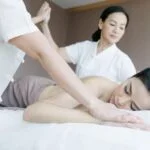Are you interested in learning how to make aromatherapy cinnamon oil at home? Aromatherapy cinnamon oil is known for its numerous benefits, including its ability to promote relaxation, improve mood, and even provide relief from common health issues. In this article, we will explore the process of making aromatherapy cinnamon oil, from selecting the right ingredients to the extraction methods and safety precautions involved.
Cinnamon oil has been used for centuries in traditional medicine and aromatherapy practices due to its aromatic and therapeutic properties. Whether you are new to the world of essential oils or a seasoned enthusiast, understanding the benefits of aromatherapy cinnamon oil can open up a whole new realm of holistic wellness for you.
In this section, we will delve into the various benefits of using aromatherapy cinnamon oil, including its potential to alleviate stress and anxiety, boost energy levels, and enhance mental clarity. Additionally, we will explore the ways in which this powerful essential oil can be incorporated into your daily routine for overall well-being. So let’s get started on this aromatic journey towards better health and vitality.
Getting Started
When it comes to making aromatherapy cinnamon oil at home, it’s important to have the essential tools and ingredients on hand. This section will cover everything you need to get started with this DIY project. From the right equipment to the key ingredients, here’s what you’ll need to create your own aromatic cinnamon oil.
Essential Tools
Before you start making your aromatherapy cinnamon oil, make sure you have the necessary tools in your arsenal. You’ll need a glass jar for infusing the oil, a clean and sterilized dropper bottle for storage, a fine mesh strainer or cheesecloth for filtering out the plant material, and a small saucepan for heating the oil. Additionally, having measuring spoons and a funnel can make the process much smoother.
Key Ingredients
The two main ingredients you’ll need to make aromatherapy cinnamon oil are cinnamon sticks and a carrier oil. When choosing your carrier oil, opt for one with a neutral scent and good absorption properties such as jojoba, almond, or fractionated coconut oil. As for the cinnamon sticks, it’s important to select high-quality organic cinnamon to ensure that your final product is pure and free from any additives or chemicals.
Additional Supplies
In addition to the essential tools and key ingredients mentioned above, consider having some extra supplies on hand for convenience. These may include labels for your finished product, a pen for writing down important details such as date of creation and expiration date, and clean towels or paper towels for wiping up any spills during the process of making aromatherapy cinnamon oil at home.
By having all of these supplies ready before you begin, you can ensure a smooth and enjoyable DIY experience.
By understanding the essential tools and ingredients needed to make aromatherapy cinnamon oil at home, you can confidently embark on this fulfilling journey into natural wellness.
Choosing the Right Cinnamon
When it comes to making aromatherapy cinnamon oil, choosing the right cinnamon is essential to ensure that you achieve the desired scent and therapeutic benefits. There are different types of cinnamon available in the market, and each type has its own unique characteristics. The two most common types of cinnamon used for aromatherapy oil are Ceylon cinnamon and Cassia cinnamon.
Ceylon cinnamon, also known as “true” cinnamon, is considered to be of higher quality compared to Cassia cinnamon. It has a sweeter and more delicate flavor and aroma, making it a popular choice for making aromatherapy oils. On the other hand, Cassia cinnamon has a stronger, spicier scent, which some people prefer for its intense aroma.
When selecting the best cinnamon for aromatherapy oil, it’s important to consider your personal preference and the intended use of the oil. If you prefer a milder scent with subtle therapeutic properties, Ceylon cinnamon may be the better choice. However, if you want a more robust aroma with stronger medicinal benefits, Cassia cinnamon could be the ideal option.
In addition to considering the type of cinnamon, it’s also crucial to choose high-quality organic or 100% pure cinnamon for making aromatherapy oil. This ensures that you are using natural ingredients without any additives or chemicals that could potentially diminish the overall quality of your final product.
| Cinnamon Type | Characteristics |
|---|---|
| Ceylon Cinnamon | Sweeter and more delicate flavor and aroma |
| Cassia Cinnamon | Stronger, spicier scent with intense aroma |
Extraction Methods
When it comes to making aromatherapy cinnamon oil, the extraction method plays a crucial role in determining the quality and potency of the final product. There are several different techniques for extracting essential oils from cinnamon, each with its own benefits and drawbacks. The most common methods include steam distillation, solvent extraction, and CO2 extraction.
Steam distillation is one of the oldest and most traditional methods for extracting essential oils from plants, including cinnamon. In this process, steam is passed through the cinnamon bark or leaves, causing the essential oil to evaporate and then condense into a liquid form. This method is popular because it is relatively simple and can be done at home with the right equipment.
Solvent extraction involves using a solvent such as hexane or ethanol to extract the essential oil from cinnamon. While this method is highly efficient and results in a higher yield of essential oil, there are concerns about residual solvents remaining in the final product. Therefore, it’s important to ensure thorough evaporation of the solvent before using the oil for aromatherapy.
CO2 extraction is a more modern and advanced technique that uses carbon dioxide under high pressure to pull out the essential oils from cinnamon. This method results in a higher quality oil with a more complete scent profile, but it requires specialized equipment and is typically used on a larger scale by professional producers.
Each extraction method has its own advantages and considerations, so it’s important to choose the one that best fits your needs when making aromatherapy cinnamon oil at home.
Overall, understanding these different techniques for extracting essential oils from cinnamon can help you make an informed decision when creating your own aromatherapy oil. Whether you prefer a traditional approach like steam distillation or are interested in more advanced methods like CO2 extraction, knowing how each method works will enable you to produce high-quality aromatherapy cinnamon oil that provides all of the wonderful benefits associated with this aromatic spice.
DIY Process
Aromatherapy cinnamon oil is a popular essential oil that offers a wide range of benefits for the mind, body, and soul. Making your own aromatherapy cinnamon oil at home is a simple and rewarding process that allows you to customize the strength and fragrance of the oil to suit your preferences. Here’s a step-by-step guide on how to make aromatherapy cinnamon oil at home.
Essential Tools and Ingredients
To get started, you will need the following tools and ingredients:
- Dried cinnamon sticks or cinnamon bark
- Carrier oil such as jojoba, almond, or coconut oil
- A clean glass jar with a tight-fitting lid
- A fine-mesh strainer or cheesecloth
- A dark-colored glass bottle for storing the finished oil
Extraction Method
There are several methods for extracting essential oils from cinnamon, including steam distillation, solvent extraction, and cold pressing. For making aromatherapy cinnamon oil at home, we will focus on the infusion method. This involves infusing the scent and properties of the cinnamon into a carrier oil over time.
DIY Process
- Start by breaking or crushing the dried cinnamon sticks or bark into smaller pieces to release their aromatic oils.
- Place the crushed cinnamon pieces into the glass jar.
- Cover the cinnamon with your chosen carrier oil, ensuring that the plant material is fully submerged.
- Seal the jar tightly and place it in a warm, sunny spot for at least 2 weeks to allow the scent and properties of the cinnamon to infuse into the oil.
- After 2 weeks, strain the infused oil through a fine-mesh strainer or cheesecloth into a clean glass bottle for storage.
By following these simple steps, you can create your own high-quality aromatherapy cinnamon oil at home that can be used in massage oils, diffusers, or added to unscented lotions for an invigorating aroma. Enjoy experimenting with different extraction methods and carrier oils to customize your aromatherapy experience.
Safety Precautions
Aromatherapy cinnamon oil is a popular essential oil known for its warming and comforting properties. However, it is important to note that essential oils, including cinnamon oil, should be handled with care. Here are some important safety precautions and tips for storing and handling aromatherapy cinnamon oil:
1. Keep Out of Reach of Children: Essential oils should always be stored in a safe place, out of reach of children and pets. Cinnamon oil, in particular, can be irritating to the skin and mucous membranes if not properly diluted.
2. Dilution: Cinnamon oil should always be diluted before applying to the skin to avoid irritation or allergic reactions. It is recommended to dilute cinnamon oil at a concentration of 1% (6 drops per ounce of carrier oil) for general topical use.
3. Skin Sensitivity: Some individuals may have sensitivities or allergies to cinnamon oil. It’s important to perform a patch test before using aromatherapy cinnamon oil topically. Apply a small amount of diluted oil to a small area of skin and wait 24 hours to check for any adverse reactions.
4. Storage: Aromatherapy cinnamon oil should be stored in dark glass bottles in a cool, dark place away from direct sunlight and heat sources. Proper storage helps maintain the quality and potency of the essential oil over time.
5. Handling Precautions: When handling pure cinnamon oil or any essential oils, it’s best to use gloves to prevent direct contact with the skin as they can cause irritation.
6. Inhalation Safety: While aromatherapy cinnamon oil can be used for inhalation through diffusers or steam inhalation, it should never be ingested. Ingesting essential oils can be toxic and should only be done under the guidance of a qualified aromatherapist or healthcare professional.
By following these safety precautions, you can enjoy the benefits of aromatherapy cinnamon oil while ensuring safe handling and usage practices in your daily routine.
Usage and Applications
Diffuser Blends
One of the easiest ways to enjoy the benefits of aromatherapy cinnamon oil is by using it in a diffuser. Simply add a few drops of the oil to your diffuser along with water, and let the warm, spicy aroma fill your home. You can also experiment with creating custom blends by combining cinnamon oil with other essential oils like orange, clove, or vanilla for a unique and inviting fragrance.
Massage Oil
Aromatherapy cinnamon oil can also be used as a massage oil to help relieve muscle tension and improve circulation. To create a soothing massage blend, mix a few drops of cinnamon oil with a carrier oil such as coconut or jojoba. Gently massage the oil into your skin, focusing on areas of soreness or stiffness. The warming properties of cinnamon oil can provide comfort and relaxation during your massage session.
Home Care Products
You can incorporate aromatherapy cinnamon oil into your daily cleaning routine by adding it to homemade household products. Create your own natural air freshener spray by combining cinnamon oil with water in a spray bottle for an uplifting room scent. Additionally, you can infuse natural cleaning products such as vinegar-based solutions with cinnamon oil for a refreshing and invigorating scent while you clean.
By integrating aromatherapy cinnamon oil into various aspects of your daily life, you can experience its delightful fragrance while reaping its therapeutic benefits for both body and mind. Remember to always dilute cinnamon oil appropriately before topical use and discontinue use if any adverse reactions occur. With these creative applications, you can fully explore the potential of this versatile essential oil in enhancing your overall well-being.
Conclusion
In conclusion, aromatherapy cinnamon oil has shown to be a powerful and beneficial addition to anyone’s wellness routine. The rich, warm scent of cinnamon not only provides a delightful aroma but also offers numerous therapeutic benefits for the mind, body, and soul.
Whether it’s used for its antibacterial properties, its ability to reduce stress and anxiety, or its potential to alleviate physical discomfort, aromatherapy cinnamon oil has proven itself as a versatile and valuable tool for overall well-being.
As we’ve explored throughout this article, making aromatherapy cinnamon oil at home is a simple and rewarding process. By carefully selecting the right type of cinnamon and using the appropriate extraction methods, anyone can create their own supply of this fragrant oil. With the step-by-step DIY guide provided in this article, individuals can confidently embark on their journey to harnessing the power of aromatherapy cinnamon oil in their daily lives.
Incorporating aromatherapy cinnamon oil into your self-care routine can truly enhance your overall well-being. Whether it’s through diffusing the oil for relaxation, adding it to a massage blend for physical comfort, or using it in natural cleaning products for its antibacterial properties; the possibilities are endless.
By taking proper safety precautions and experimenting with various usage methods, individuals can fully experience the multitude of benefits that aromatherapy cinnamon oil has to offer for their mind, body, and soul.
Frequently Asked Questions
Can I Make My Own Cinnamon Essential Oil?
Yes, you can make your own cinnamon essential oil at home. The process involves using a carrier oil and cinnamon sticks or powder, and allowing the mixture to infuse over time.
How Do You Extract Cinnamon Essential Oil?
Cinnamon essential oil can be extracted through steam distillation, where the cinnamon bark is placed in a still and pressurized steam is passed through it. This method separates the oil from the plant material.
How Do You Make Cinnamon Aroma?
To make a cinnamon aroma, you can use cinnamon essential oil with a diffuser to spread the scent throughout a room. Alternatively, you can create a simmer pot by combining cinnamon sticks, citrus peels, and spices in water on the stove.

Are you looking for a natural way to improve your health and wellbeing?
If so, aromatherapy may be the answer for you.





